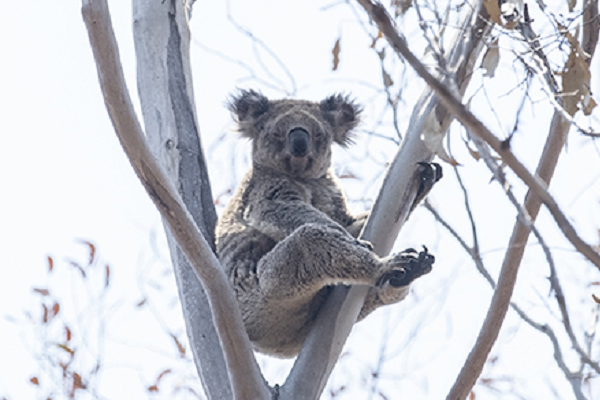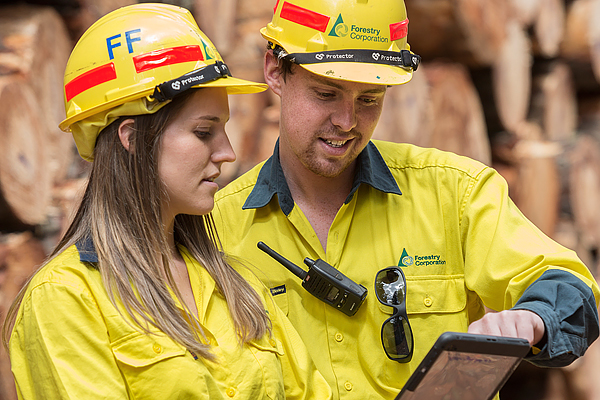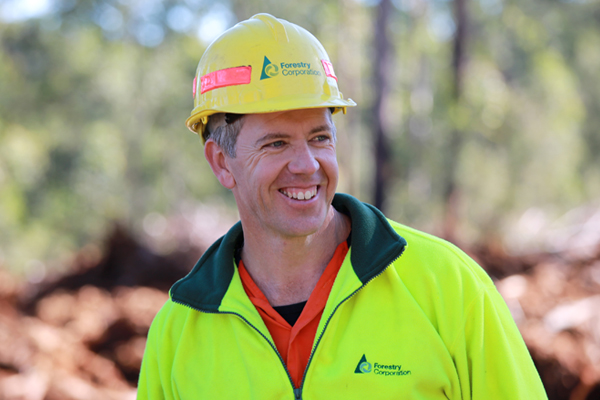
Environmental monitoring
A new long-term monitoring program has been established to monitor plants and animals in eastern NSW, in partnership with the NSW Department of Primary Industries and Natural Resources Commission. Find out more.
The 2019-20 bushfire season was the worst experienced. Forestry Corporation's firefighting teams and resources were an integral part of the coordinated statewide firefighting response and recovery efforts. A substantial area of the NSW State forest estate was impacted by bushfire, but these forests were not lost. Since the fires, we have been working hard to recover, regrow and rebuild for the future.

A new long-term monitoring program has been established to monitor plants and animals in eastern NSW, in partnership with the NSW Department of Primary Industries and Natural Resources Commission. Find out more.

Since the 2019-20 fires, more than five million tonnes of fire-affected timber were salvaged and processed into important timber and wood products. Download the review of the salvage program.

Forestry Corporation introduced additional protections to augment environmental safeguards and minimise the impact of operations in the post-fire landscape. Read more.
While pine trees are less fire tolerant than many native Australian species, dead trees can be harvested and processed into timber products. Once the outer bark is removed, the timber underneath is still strong and suitable for a range of uses including structural timber. The salvage program following the 2019-20 was the biggest in this country’s history.
Forestry Corporation commissioned a review of the fire salvage effort in the Tumut Management Area to identify the successes and opportunities for improvement.
Effective collaboration across the timber industry and learning the lessons from past fire salvage efforts were key factors underpinning the success of the record salvage effort. There was also significant investigation into log storage options under water or sprinklers, including a trial that provided useful lessons should long-term storage of burnt timber be required following fires in future.
Each year, we replant around 10 million seedlings, to regrow every tree we harvest. Following the fires, we have upgraded our seedling production nurseries and are on track to restock all the fire affected plantations by 2026.
Forestry Corporation manages more than 60,000 kilometres of roads and many hundreds of bridges and crossings. These are used by the community to access State forests for tourism and recreation and in many instances they also serve as vital road links to properties or between communities. They also provide access for forestry operations. The fires had an enormous impact on roads, bridges and other State forest infrastructure and the repair work is ongoing.
Timber is the most renewable building product available and we have also played a crucial role in delivering the renewable timber needed to rebuild homes, power poles, bridges and community infrastructure, maintaining local work in fire-affected communities and regrowing our forests for the future.
Following an environmental assessment, Forestry Corporation introduced additional protections to augment environmental safeguards and minimise the impact of operations in the post-fire landscape. Forestry Corporation also reviewed the long-term sustainable yield of timber from NSW State forests following the 2019-20 bushfires to ensure the amount of timber harvested and the stocks of timber in the forests remain stable.
A new long-term monitoring program has been established to monitor plants and animals in eastern NSW, in partnership with the NSW Department of Primary Industries and Natural Resources Commission. Find out more